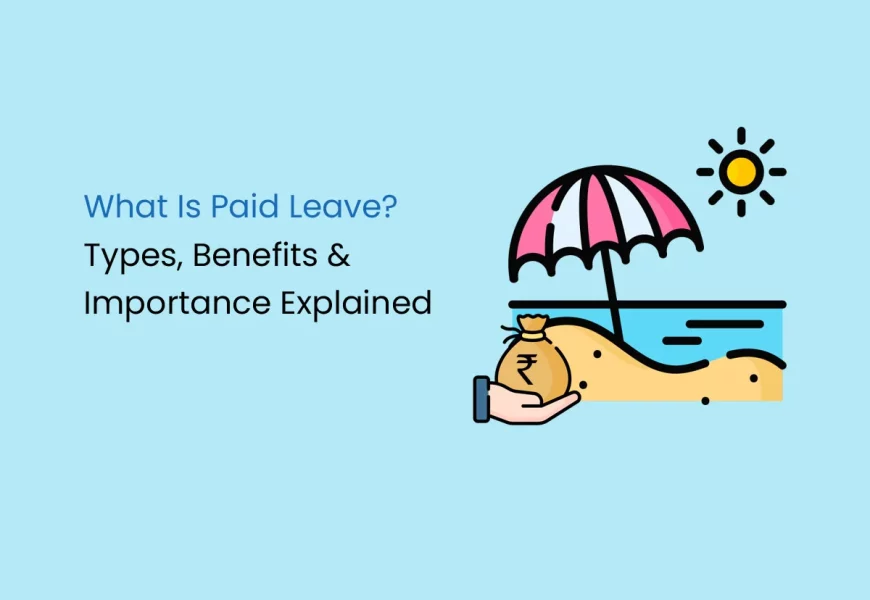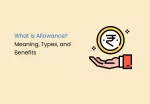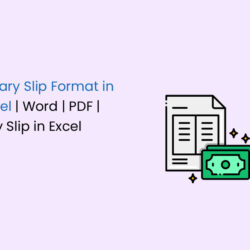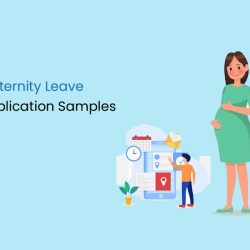Understanding the concept of paid leave meaning is essential in today’s professional landscape. Paid leave is one of the most valuable workplace benefits that affects your work-life balance. Every working professional should understand what paid leave means because it determines how you can take time off while getting your regular pay.
Your time away from work can be for personal matters, health issues, or maybe even a vacation. Paid leave covers different types of time off that let you receive your regular salary. These include vacation days, sick leave, maternity/ paternity leave, and bereavement leave. This complete guide will teach you everything from the basic meaning to the different types of leave available in organisations of all sizes.
What is Paid Leave?
A paid leave is when an employee takes a break from the workplace due to personal reasons and still receives regular salary or wages. This leave is a workplace benefit that lets an employee handle personal matters such as going on vacation, any health issue or any pre-planned appointment without any financial stress.
Still in doubt? A paid leave is a benefit that ensures employees do not lose income while taking necessary leave from work. This promotes work-life balance and employee well-being, making it an important part of current employment practices.
Types of Paid Leave
A paid leave is a benefit to make sure that employees doesn’t face salary deduction while taking necessary leave from work. This promotes employees work-life balance and their well-being. From planned holidays to uninvited emergencies, employees have different categories of paid leave that leverage the flexibility to manage such situations without deduction in their income. Leave comes in various forms, each designed to cater to specific situations and needs. Let’s have a brief overview of different types of paid leave:
Privileged Leave (PL) / Earned Leave (EL)
These are leaves earned by employees based on the number of days worked. They are usually planned in advance and used for vacations or personal matters. In most organisations, employees must apply for this leave in advance. The number of PL or EL days granted annually varies from company to company and may be carried forward or encashed depending on the employer’s leave policy. This flexibility makes it one of the most valued leave types for long-term planning.
Sick Leave/ Medical Leave
Sick leave allows employees to take time off when they are unwell. It supports recovery without financial strain and typically requires a medical certificate if the leave is extended. This type of leave promotes a healthier workforce and reduces the risk of spreading illnesses within the office.
Casual Leave (CL)
Unlike other leave types, Casual Leave (CL) is often limited in number (around 6–8 days per year depending on company policy) and is not carried forward to the next calendar year. It is usually sanctioned at short notice and is meant for short durations, typically 1–2 days.
Maternity Leave
Maternity Leave is a legally compulsory paid leave granted to women during and after pregnancy. Under Indian law, as per the Maternity Benefit Act, for the first two children, eligible female employees are granted to 26 weeks of paid maternity leave. For the third child and onward, the entitlement is 12 weeks.
This type of leave ensures the physical and emotional well-being of both mother and child. Employers are also increasingly offering extended or flexible return-to-work options to retain talent.
Parental Leave
Parental Leave includes Paternity Leave, Adoption Leave, and Shared Parental Leave. It is designed to support parents beyond maternity benefits, acknowledging that both parents play critical roles in a child’s early development.
Bereavement Leave
Bereavement Leave is granted when an employee experiences the loss of an immediate family member. It provides time to grieve and manage related responsibilities.
Compensatory Off (Comp-Off)
Employees who work on holidays or weekends are often granted compensatory leave in return for the extra hours worked. Some organisations allow encashment of comp-off days if not availed within the stipulated timeframe.
National and Public Holidays
These are government-declared holidays like Independence Day, Republic Day or Gandhi Jayanti. Employees are paid even though they do not work on these days.
Why is Paid Leave Important?
Till now, You must have had an overview about leave and seen it as a benefit. But it is more than a benefit or a policy. Paid leave is beyond just taking a paid day off, it plays an important role in employees welfare and organisational efficiency.
- Encourages Employee Care and Support: Paid leave provides employees the freedom to take care of personal and family needs without worrying about losing income. This results in promoting a healthier and more supportive work environment.
- Increases Productivity: Employees who have take periodic leaves are more productive and efficient in comparison to employees who don’t take leaves. Paid leaves helps in preventing any burnout at work.
- Minimizes Employee Exhaustion: Sitting for long hours and constantly working results to fatigue. Paid leaves offers a necessary short break from work, helping maintain energy levels and mental health.
- Elevates Employee Morale: Employees morale and loyalty is boosted knowing that the organisation supports their personal needs.
- Maintains Adherence to Labour Regulations: Companies do not have an option in the matter of paid leaves. Most labour laws mandate leave provisions. Ensuring compliance helps companies avoid legal issues and build a positive workplace culture.
Understanding the Distinction Between Paid and Unpaid Leave
We have differentiated the features of paid and unpaid leave through a table to provide a clearer understanding.
| Aspect | Paid Leave | Unpaid Leave |
|---|---|---|
| Definition | When an employee takes a day off from work but still receives their salary for that day. | However, on unpaid leave, the employee does not receive a salary for the day taken off from work. |
| Salary Deduction | In the case of paid leave, there is no salary deduction. Employees receive their regular pay. | In the case of unpaid leave, salary is deducted for the days the employee takes off from work. |
| Types of Leave | This includes annual leave, sick leave, maternity leave, parental leave, and other types of leave. | This includes personal leave, extended medical leave, sabbaticals, and other similar types of leave. |
| Company Policy | Paid leave granted depends on the company’s leave policy and the employee’s contract. | It typically requires prior approval and is granted only in exceptional situations. |
| Employee Benefits | The employee continues to receive benefits such as bonuses, allowances, and insurance. | Benefits may be affected, depending on company policies. |
| Approval Process | It is usually pre-approved as part of the company’s leave structure policy. | It requires prior approval from the HR department or management. |
| Impact on Employment | Paid leave has no impact on employment status or tenure. | Unpaid leave may affect employee tenure and other benefits. |
| Employer Obligation | Often mandated by labour laws to provide certain types of paid leave. | Not mandatory; subject to employer discretion and specific company policy. |
Impact of Paid Leave on Employee Retention
One of the most underestimated benefits of paid leave meaning is its direct connection to employee retention. In the competitive job market it is very difficult to retain a skilled professionals. It has become just as important as hiring them. A well-structured paid leave policy not only promotes a healthy work-life balance but also significantly improves employee satisfaction and loyalty.
- Enhances Job Satisfaction- When employees feel that their personal time and well-being are respected it directly contributes to a positive work culture. They are more likely to remain with an organisation while feel cared for and appreciated.
- Reduces Burnout and Turnover- Paid leave gives employees the chance to take rest both physically and mentally. When organisations encourage employees to take their entitled time off, it reduces the risk of burnout and therefore minimises turnover.
- Builds Organisational Trust- Trust is a crucial factor in employee retention. Companies that offer consistent and fair leave policies are seen as more trustworthy by their staff.
- Attracts New Talent- Job seekers compare benefits like paid leave across offers. Especially freshers who seek to learn and work. Companies that offer more flexible and inclusive leave structures tend to attract top talent and reduce the frequency of hiring cycles.
- Encourages Work-Life Balance- Paid leave supports work and personal life, ultimately making the workplace more sustainable and employee-friendly in the long run.
- Strengthens Company Reputation- A company known for respecting personal time and offering flexible paid leave policies often gains a word-of-mouth and online stronger reviews boosting the reputation, directly impacting the retention and reputation.
Conclusion
The blog focuses on providing a brief overview of paid leave, its meaning, its benefits, importance, types, other paid leaves other than standard categories, how it enhances employees productivity as well as employers. It’s a great investment in employee well-being, productivity, and a balanced work environment. Understanding paid leave and how it functions can help both employees and employers make the most of this vital benefit.
Frequently Asked Questions
Is it compulsory for employers to provide paid leave?
In many countries, labour laws mandate a minimum number of paid leave days. However, the specifics depend on local laws and company policy.
Is it possible for an employer to refuse a paid leave request?
Yes, an employer can refuse a paid leave request. This happens in the case of, if the request doesn’t align with company policy or if urgent ongoing business needs cannot accommodate the absence. Clear communication is essential.
Can employees carry forward unused paid leave to the next year?
Many organisations allow carry-forward of unused leave up to a certain limit. Some may also offer encashment options.














